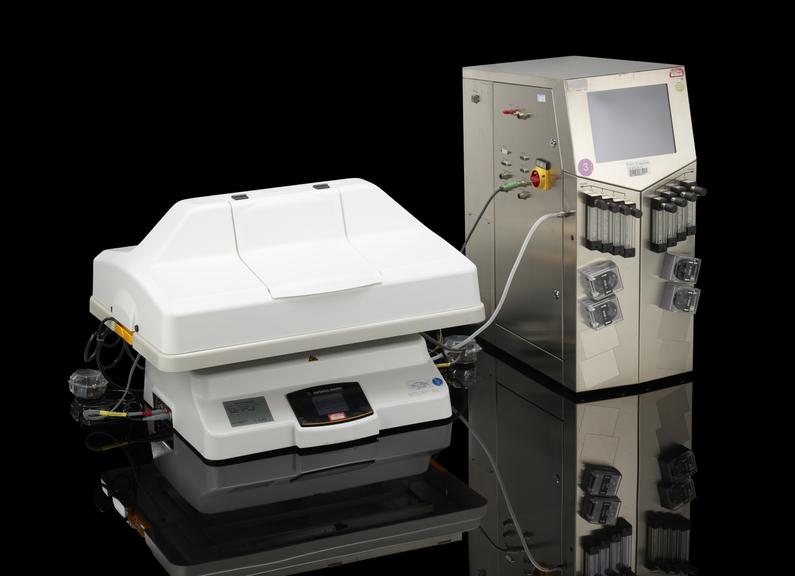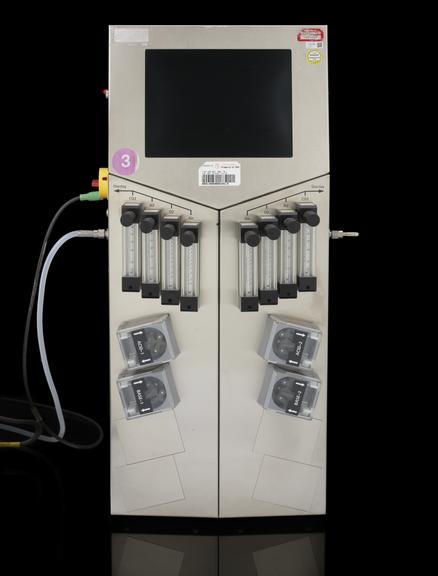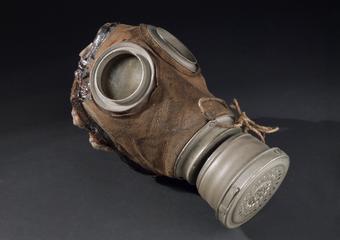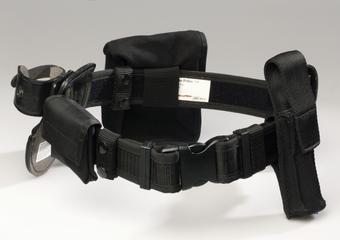Rocking panel from bioreactor used during manufacture of the Janssen, Johnson & Johnson COVID-19 vaccine
Rocking panel, with Flexsafe® cell bags, part of Biostat® bioreactor system, made by Satorius Stedim Biotech, used for growing PER.C6 cells for the early production of the Janssen Johnson & Johnson COVID-19 vaccine, 2020-2021
More
Wave-mixed bioreactors like this one consist of a “pillow-like” culture bag, which sits on a platform with a rocking motion to create a wave for mixing and bubble-free liquids to provide an environment to grow cells and microorganisms. This bioreactor was essential in the early production of the Janssen Johnson & Johnson COVID-19 vaccine to produce their vaccines for phase 1, 2 and 3 clinical trials and emergency use batches to start 50 litre vaccine production.
The vaccine uses a deactivated human common cold virus, known as an adenovirus, to deliver the genetic code for the coronavirus (SARS-CoV-2), spike protein. This is a protein on the SARS-CoV-2 virus which it needs to enter our cells. Later, if the person comes into contact with the COVID-19 virus, the person’s immune system will recognise the spike protein on the virus and be ready to defend the body against it. The adenoviruses are grown in the PER.C6 cell line, derived from human embryonic retinal cells. For 7 days the cells grown until there are sufficient cells to start the cell expansion process in another bioreactor which takes a further 10 days. Another 3 days are needed to cultivate the adenoviruses. The PER.C6 cells are filtered out and removed during vaccine manufacturing.
Drawing on decades long work, researchers at Beth Israel Deaconess Medical Center, worked with Janssen Vaccines, a subsidiary company of Johnson and Johson, to rapidly identify possible candidates for a COVID-19 vaccine in January 2020. After much testing the AD26.COV2.S candidate went into small scale production in Leiden, Netherlands, for further testing and clinical trials. Within 13 months, their single dose vaccine was approved for emergency use in the United States for over 18s in February 2021. In total ,103 countries approved the use of Johnson & Johnson’s vaccine, known by the brand name Jcovden.
- Measurements:
-
overall: 490 mm x 810 mm x 595 mm,
- Materials:
- metal (unknown) and plastic (unidentified)
- Object Number:
- 2022-1076/1
- type:
- bioreactor

















